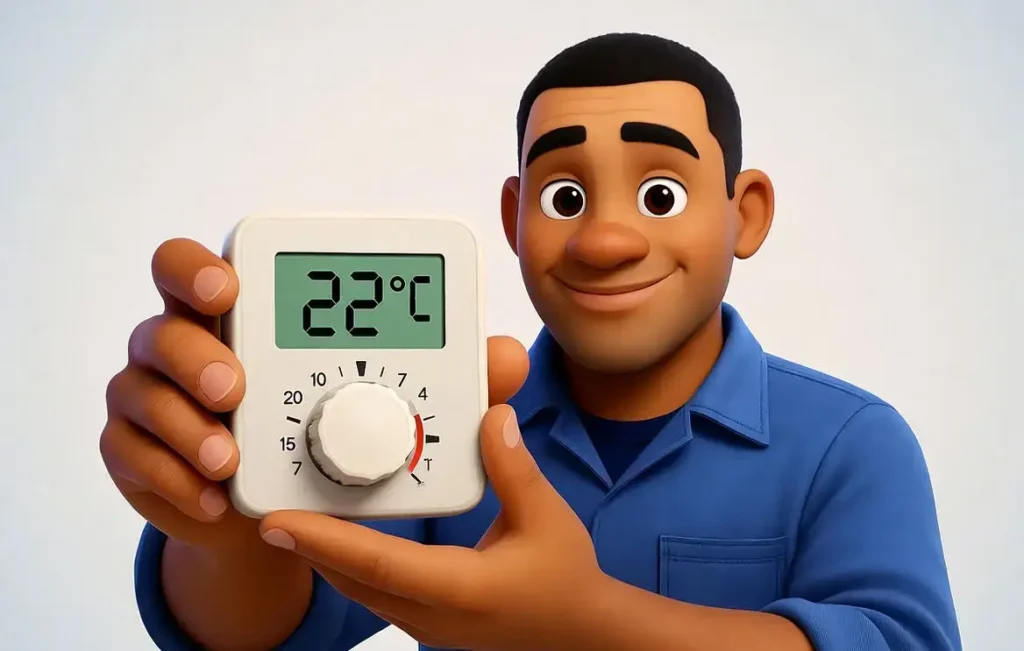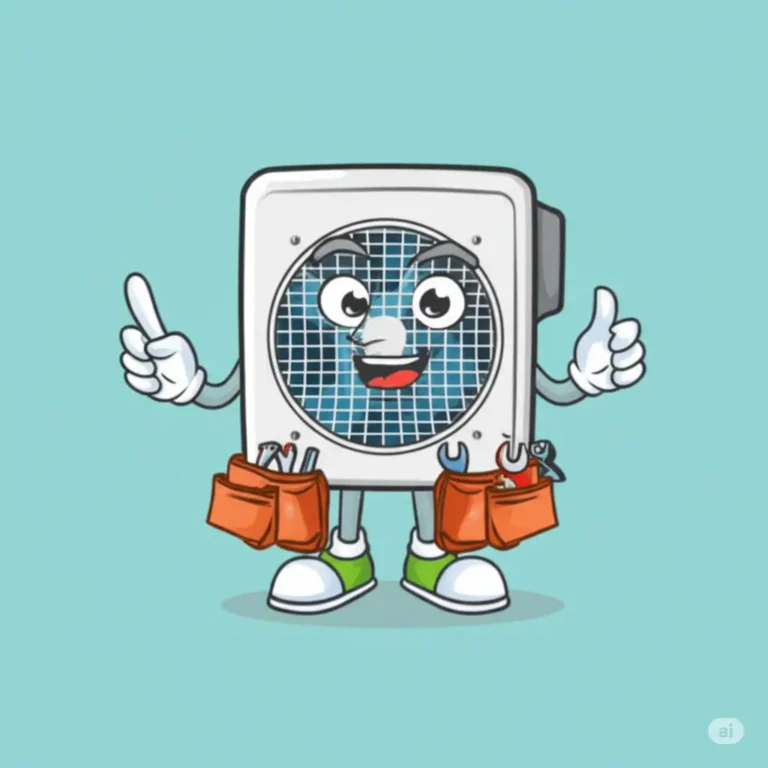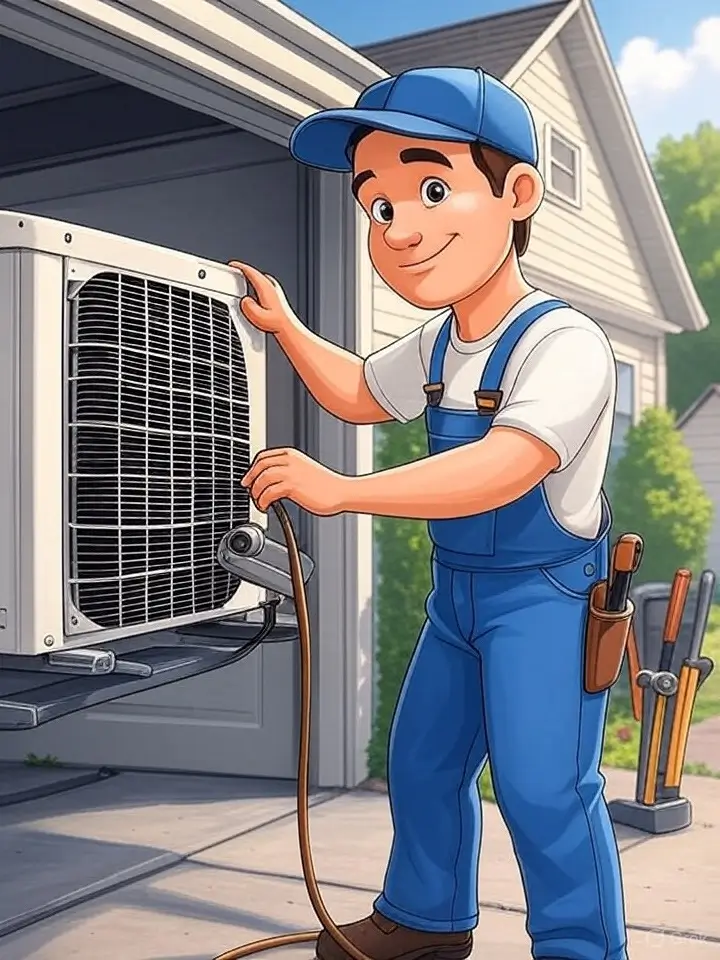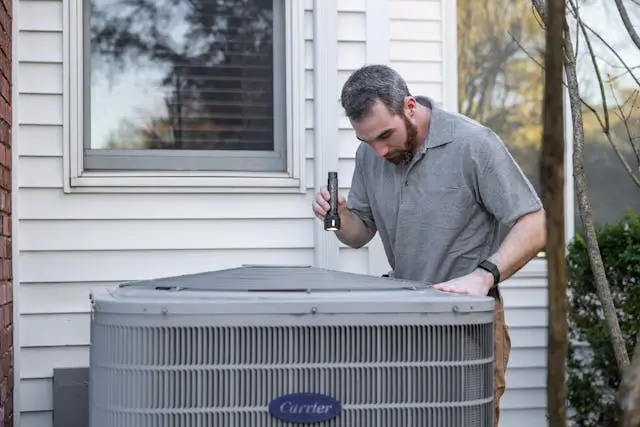What’s the Optimal Temperature for Your Thermostat When It Gets Cold?
Need Help Adjusting or Servicing Your Heating System?
Don’t wait until your furnace stops working on a cold Michigan night. Our local handyman and HVAC experts can make sure your thermostat, vents, and heating system are running efficiently before winter hits. Call now and schedule a service appointment today.
📞 Call us at 313-254-6072
As temperatures start to drop in Michigan, homeowners face the same question every fall: What should I set my thermostat to when it gets cold?
Setting your thermostat properly during cold weather isn’t just about comfort — it directly impacts your energy bills, furnace lifespan, and indoor air quality. As a professional handyman, I’ve seen firsthand what happens when homeowners push their systems too hard or use the wrong settings for their home’s layout and insulation.
If your furnace seems to run constantly, or your home still feels chilly despite cranking up the heat, this guide is for you. Let’s break down the optimal thermostat settings for winter, the science behind efficiency, and how to keep your home warm without overpaying on utilities. We want to help keep the Temperature for Your Thermostat consistent for your home.
The Ideal Thermostat Setting for Winter
For most homes, the recommended thermostat setting during cold weather is between 68°F and 72°F while you’re awake and at home.
Here’s the breakdown:
- 68°F offers the best balance between comfort and energy savings.
- 70°F–72°F is ideal for families with infants, elderly residents, or those who simply prefer a warmer indoor temperature.
- 65°F or lower may be fine while you’re asleep or away from home but can cause pipes to freeze if temperatures drop too far.
According to the U.S. Department of Energy, turning your thermostat back 7–10°F for 8 hours a day can save up to 10% annually on heating costs. That’s why programmable thermostats are such a smart investment — they adjust automatically based on your routine.

The Science behind Efficient Heating
Your furnace doesn’t work like a light switch — it cycles on and off to maintain your desired temperature. The wider the gap between indoor and outdoor temperatures, the harder your furnace has to work.
For example:
If it’s 20°F outside and you set your thermostat to 75°F, your furnace runs longer, consuming more gas or electricity. Keeping your thermostat around 68°F–70°F reduces the workload and minimizes heat loss through walls, windows, and doors.
This is especially important for Michigan homes with older insulation or drafty windows. The smaller the difference between indoor and outdoor air, the slower your home loses heat — meaning your system runs less often.
Thermostat Adjustments for Comfort
If you find 68°F a bit too cool, there are a few ways to make your home feel warmer without touching the thermostat:
- Use ceiling fans on reverse. Most fans have a winter setting that spins blades clockwise, pushing warm air down from the ceiling.
- Seal gaps around doors and windows. Even a small draft can make rooms feel several degrees colder.
- Add area rugs on hard floors. They insulate cold floors and make walking around more comfortable.
- Use smart zoning if available. Some thermostats can control specific rooms or floors, letting you warm only the spaces you use most.
- Keep interior doors open. This helps heat circulate evenly throughout your home.
These small changes reduce the temptation to bump your thermostat up to 74°F or 75°F — a costly habit that adds up quickly in winter months.
The Best Thermostat Settings by Time of Day
Managing your thermostat based on your daily routine can significantly improve efficiency. Here’s a simple breakdown:
Morning (6 AM – 9 AM):
Set the thermostat to 68°F–70°F while you’re getting ready for the day.
Daytime (9 AM – 5 PM):
If no one is home, reduce the temperature to 64°F–66°F. For those who work from home, keep it around 68°F and use space heaters in offices if needed.
Evening (5 PM – 10 PM):
Return it to 68°F–70°F while you’re home and active.
Night (10 PM – 6 AM):
Lower it to 65°F–67°F for better sleep and lower heating costs.
This schedule keeps comfort consistent while cutting unnecessary furnace cycles.
Don’t Forget About Humidity
Winter air is dry — and heated air is even drier. When your home’s humidity drops below 30%, it can make the air feel several degrees colder than it actually is.
If your thermostat is set to 68°F but you still feel chilled, dry air may be the culprit. Using a whole-house humidifier or portable unit helps maintain comfort at lower temperatures. Proper humidity also protects wood floors, furniture, and musical instruments from cracking.
Why Thermostat Location Matters
Even if your thermostat is set correctly, its location can skew the reading and waste energy.
Avoid placing thermostats near:
- Drafty windows or exterior doors – They’ll read falsely cold air.
- Direct sunlight – Causes inaccurate high readings.
- Vents or radiators – Leads to short-cycling as the sensor thinks the room is warmer than it is.
Ideally, your thermostat should be:
- Mounted on an interior wall,
- About 5 feet off the ground,
- Away from heat sources or cold drafts.
Proper placement ensures accurate temperature readings, efficient heating, and consistent comfort.
The Benefits of Smart Thermostats
If you’re still using an old manual thermostat, upgrading to a smart or programmable model is one of the best home improvements you can make.
Benefits include:
- Automatic scheduling – Adjusts based on your daily habits.
- Remote control via phone – Perfect if you travel or work late.
- Energy tracking – Helps you see how changes affect your bill.
- Zoning compatibility – Great for larger or multi-level homes.
Brands like Nest, Ecobee, and Honeywell make thermostats that learn your preferences and optimize heating cycles automatically.
Common Mistakes Homeowners Make
Even small thermostat mistakes can cost you hundreds each winter. Avoid these:
- Cranking the heat when it feels cold – Your furnace doesn’t heat faster; it just runs longer.
- Constantly changing settings – It confuses your system and reduces efficiency.
- Ignoring drafts – You’ll waste heat and strain your furnace.
- Turning the system completely off during the day – Your furnace must work harder to reheat your home at night.
Stick to gradual adjustments and maintain consistent, efficient settings.
When to Call a Professional
If your thermostat seems to work fine but the house still feels cold, the issue may not be the temperature setting — it could be your furnace, ductwork, or insulation.
Common signs you need a professional inspection include:
- Furnace runs nonstop or shuts off prematurely
- Uneven temperatures between rooms
- Poor airflow from vents
- Thermostat readings that seem inaccurate
A qualified handyman or HVAC technician can inspect your system, test your thermostat calibration, and recommend upgrades or repairs.
Final Thoughts
Finding the optimal thermostat setting in cold weather isn’t about a single number — it’s about balance.
For most Michigan homeowners, 68°F–70°F during the day and 65°F–67°F at night hits the sweet spot between comfort and efficiency.
Combine that with proper sealing, smart thermostat use, and humidity control, and you’ll enjoy a cozy home all winter long without overspending on utilities.
If your heating system struggles to keep up or you’re ready to upgrade your thermostat, a professional handyman can help you install, calibrate, and optimize your setup safely. Having the right Temperature for Your Thermostat can be a blessing for your home.
Need Help Setting or Servicing Your Thermostat?
Our experienced Michigan handymen can help you optimize your thermostat, tune up your furnace, and make sure your home stays warm all winter long. We handle everything from heating system checks to smart thermostat installations.
Call us today at 313-254-6072 to schedule your service.






